#utricularia sandersonii
Text
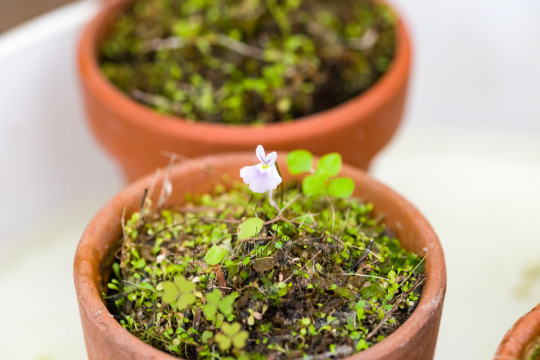
#utricularia sandersonii#Ofuna Botanical Garden#Kanagawa#ウサギゴケ#大船フラワーセンター#神奈川#Carl Zeiss Makro-Planar T* 2/100
16 notes
·
View notes
Photo



Utricularia sandersonii, via hantsflytrap.com
#flowers#carnivorous plants#Utricularia#utricularia sandersonii#green#leaves#mine#upload#well its my post#in other news our u. reniformis is completely dead :pensive: at least our u. longifolia is doing well#our flytrap saracenia and 2 pitcher plants are doing quite well though :)#actually the st. gaya had a baby so its 3 pitcher plants now!
6 notes
·
View notes
Text
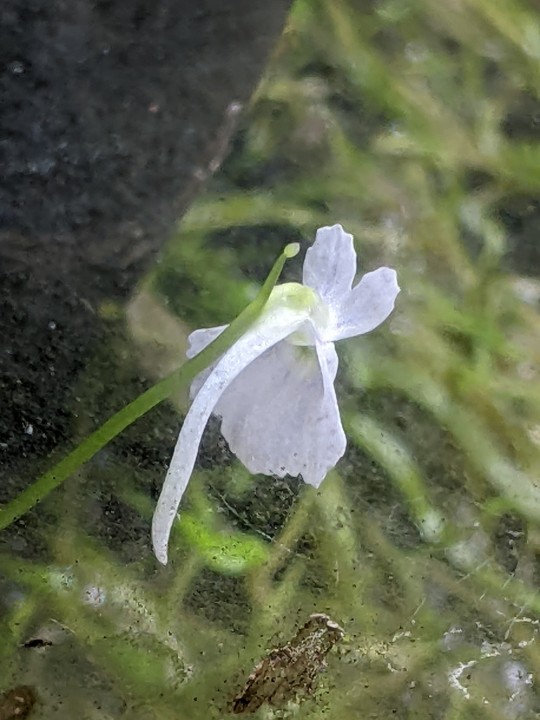

SURPRISE BUNNY IN THE TERRARIUM, THIS IS NOT A DRILL.
14 notes
·
View notes
Text
What Are Lithophytes?

Originally posted on my website at https://rebeccalexa.com/what-are-lithophytes/
Ask most people what plants need to grow in, and they’ll say “soil” or “dirt”, right? And for the majority of terrestrial plants that’s the case. But given the sheer scale of biodiversity and the ability of species to make use of any niche–no matter how small–left unoccupied, there are of course exceptions. Take epiphytes, for example, that cling to the bark of trees and other plants. Rather than drawing nutrients and water from soil, they instead absorb what they need from the air. Psammophytes also get what they need from the air, but instead sink their root system into shifting sand dunes.
I am especially fascinated by lithophytes. “Litho-” means “stone”, and so a lithophyte is simply a plant that grows on stone. There are two main types of lithophyte. Epilithic lithophytes grow on a stone’s surface, and a crevice in the stone may be populated by endolithic lithophytes. Some of these plants can only grow on stone, so they’re described as obligate lithophytes, but their facultative lithophyte neighbors are those that are able to colonize both stone and soil or another substrate at the same time–some lithophytes can even live as tree-dwelling epiphytes instead!
Like epiphytes, a lithophyte may have some ability to absorb water and nutrients from the air. But they also capitalize on anything that ends up washed into their roots by rain. Endoliths may find that over time debris accumulating in their crevice offers a much-needed resource boost. As part or all of a lithophyte dies, the surrounding plants extract nutrients from the decaying matter–nothing goes to waste in nature, after all. They do not, as a general rule, have a negative effect on the rocks themselves; while some rock-dwelling lichens may chemically weather the stone beneath them, lithophytic plants simply use the rock as a convenient surface to take root.
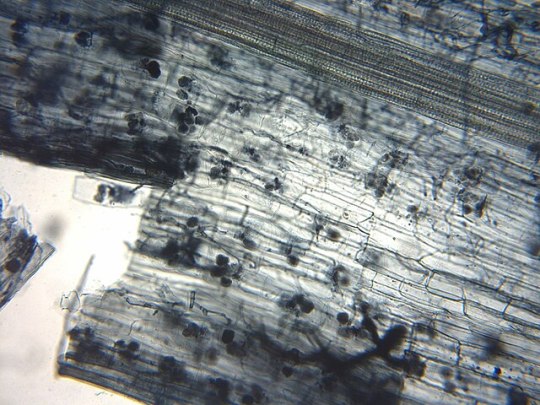
Arbuscular mycorrhizae within a root as seen under a microscope
What I find really cool is that lithophytes can be mycorrhizal! Their roots are pierced by colonies of various arbuscular mycorrhizal fungi that draw up nutrients from the soil and share them with the plants. While this is a very common relationship in nature–four out of every five vascular plant species uses arbuscular mycorrhizal networks–lithophytes seem to have cultivated a greater concentration of these helpful fungi.
A moss-covered rock is often someone’s first encounter with lithophytes. Lacking proper roots, mosses hang onto the stone with tiny rhizomes. Over time they might cover its entire surface, and if said surface is relatively flat and protected from weather and other erosive forces, their decaying remains could be the very beginning of a new patch of soil.
But it’s not just the little bryophytes like mosses that can eke out a living on a rock. More complex vascular plants may also take root on or within stone. One of my favorite ferns, the licorice fern (Polypodium glycyrrhiza) commonly grows as an epiphyte on trees in the Pacific Northwest, but given the right opportunity it will colonize a suitable crevice in a cliff. Orchids may have a reputation for being difficult to care for in captivity, but in the wild there are a lot of lithophytic species. Many, like Dendrobium teretifolium or many Phalaenopsis species, can also live quite well as epiphytes on a tree or other plant. And the wallflower, Erysimum cheiri, got its common name for its tendency to grow out of cracks in rocky slopes.

Nepenthes campanulata
Unsurprisingly, some carnivorous plants make their homes on rocks, and their carnivory allows them access to much-needed nutrients in an otherwise limited setting. The pitcher plant Nepenthes campanulata often grows in colonies on cliff faces. Heliamphora exappendiculata, another pitcher plant, will happily grow both in wetlands and on constantly damp rocks. Sanderson’s bladderwort (Utricularia sandersonii) doesn’t eat insects, but instead sucks up microscopic organisms using bladders the plant buries under nearby soil or sediment.
One more thing: are the plants you see growing in gravel also lithophytes? Not necessarily. There may be soil beneath the gravel that the plant is exploiting. Or the gravel itself may be part of a mineral soil–one that has a lot of stone and not much organic material. A true lithophyte is going to be attached to a rock or rooted in its crevice, though it’s possible to find lithophytes growing on stones that, through weathering, may be feeding fragments into a nearby mineral soil over time.
Did you enjoy this post? Consider taking one of my online foraging and natural history classes or hiring me for a guided nature tour, checking out my other articles, or picking up a paperback or ebook I’ve written! You can even buy me a coffee here!
#lithophytes#botany#plants#science#nature#scicomm#carnivorous plants#moss#fungi#mycorrhizal fungi#mycology#ecology#bryophytes#biodiversity#epiphytes#educational
120 notes
·
View notes
Text
Bog terrarium 🌿
Planted with the following carnivorous plants:
Drosera slackii Hermanus
Drosera capensis alba
Pinguicula esseriana
Pinguicula 'Weser'
Utricularia sandersonii
Utricularia livida


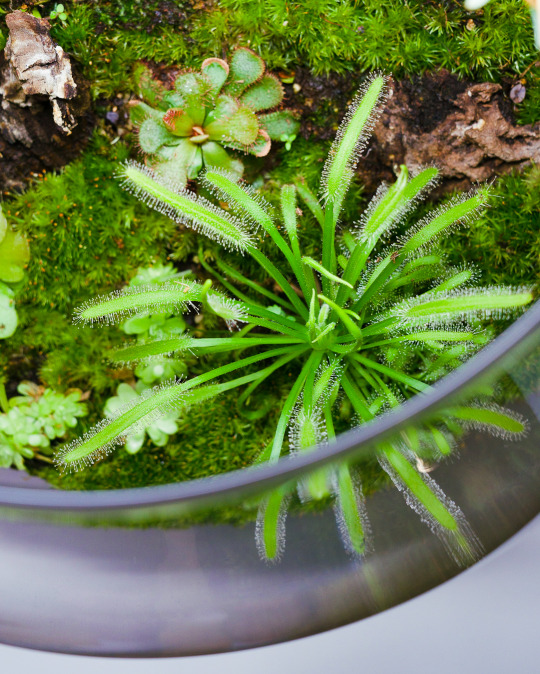

#terrariumdesign#terrarium#carnivorous plants#carnivores#terrariumlove#terrariums#mossterrarium#mossgarden#drosera#pinguicula#utricularia
110 notes
·
View notes
Text
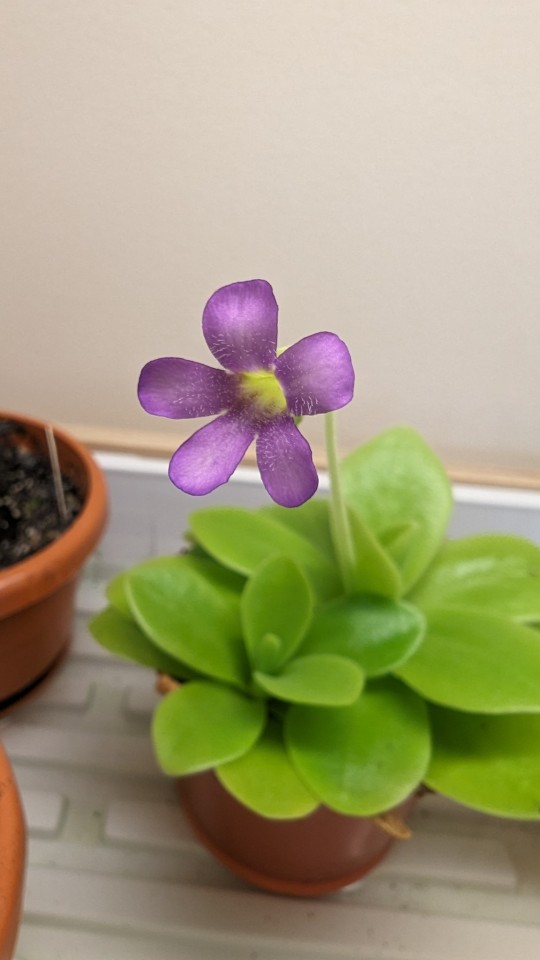



A bunch of my carnivorous plants are in bloom right now! Top left is my Pinguicula gigantea, top right is my Pinguicula aphrodite, bottom left is my Utricularia sandersonii, and bottom right is my Utricularia subulata! Most have been pushing out blooms since July, but this is the first time my P. gigantea has bloomed, I've neglected it several times the past 3 years I've had it, but it's a trooper.
6 notes
·
View notes
Text

My carnivorous plant bog! Ft.:
3 sundews (Drosera capensis, D. tokaiensis, and D. madagascariensis)
a tropical pitcher plant (Nepenthes spectabilis x mira)
an Australian pitcher plant (Cephalotus follicularis)
a butterwort (Pinguicula primuliflora)
a terrestrial bladderwort (Utricularia sandersonii)
an aquatic bladderwort (Utricularia gibba)
2 air plants (Tillandsia caput-medusae and T. ????? an fuckin mystery)
a bunch of moss, twigs, and licheny bark from my front yard
an un-chia’d Chia Bob Ross

The 2 tiny moss terrarium on top of the bog
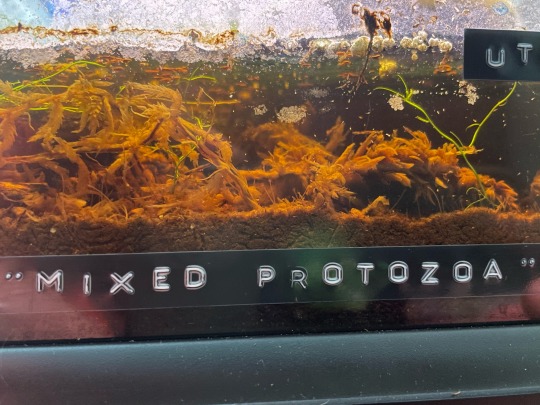
The bog water ft. the critters and the strands of aquatic bladderwort. The only things I put in the water were Daphnia (D. pulex) and whatever is in the “mixed protozoa” from Carolina Biological Supply. The Daphnia are the little white specks. I have what I think are some sort of hydrozoan, the little noodle guys sticking out of the peat at the bottom with a little crown of tentacles at the end. It looks like of them have like, cocooned themselves in the peat or sphagnum and float through the water in their cocoon and reach out and try to grab at the Daphnia with their tentacles occasionally. I also have little tiny roundworms and what look like some sort of flatworm. I’m guessing all these dudes just hitchhiked in on the aquatic bladderwort. I also had some damselflies that mysteriously showed up in the bog a while back; presumably they hitchhiked in as nymphs.
A video of The Critters in action. You can see the Daphnia as little white specks jerking about in the water and what look like hydrozoans wiggling in the peat at the bottom. You can also see what looks like a white flatworm crawling toward the top right of the waterline.
18 notes
·
View notes
Text

Utricularia sandersonii
#stefano bonalume#utricularia#utricularia sandersonii#bladderwort#carnivorous#carnivorous plant#carnivorous plants#plant#plants#green#balcony garden#garden#nature#botany
169 notes
·
View notes
Photo

Paradoxical - a tiny little lupine.
#flower photography#wildflower#carnivorous plant#utricularia sandersonii#paradoxical#bladderwort#a least#because even the smallest count...#you were one of the most beautiful things...#you were the sweetest thing ...#a tiny little one#a tiny little one lupine
8 notes
·
View notes
Text
“The Love Story of Utricularia sandersonii & Lepidoptera”
Creator: STARember
Link: https://m.weibo.cn/3965504847/4614788337895928

97 notes
·
View notes
Text
Fun Facts About Carnivorous Plants: Fact #16
While most bladderworts are aquatic, there are some terrestrial varieties (like Utricularia sandersonii) that feed primarily on tiny insects in the marshy soil around them. There are also tropical bladderworts, found in the Caribbean, Central America, and South America.
3 notes
·
View notes
Text
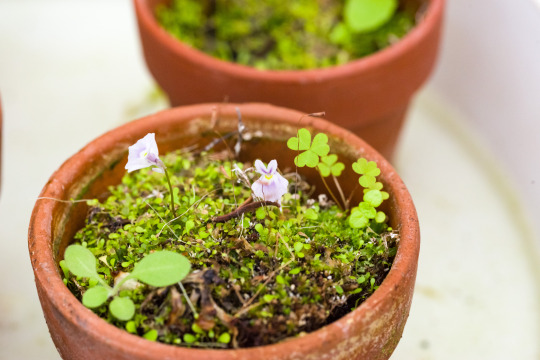
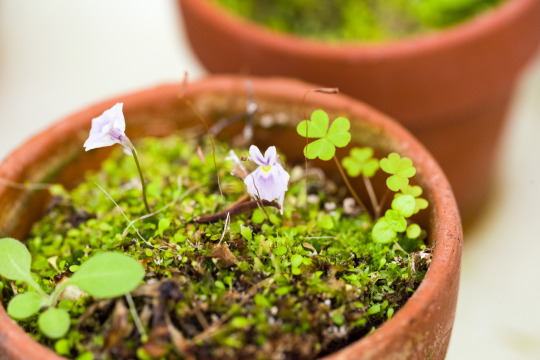
#utricularia sandersonii#Ofuna Botanical Garden#Kanagawa#ウサギゴケ#大船フラワーセンター#神奈川#Carl Zeiss Makro-Planar T* 2/100
18 notes
·
View notes
Note
have i told you about utricularia sandersonii it's a bladderwort that has blooms that look like little white bunnies
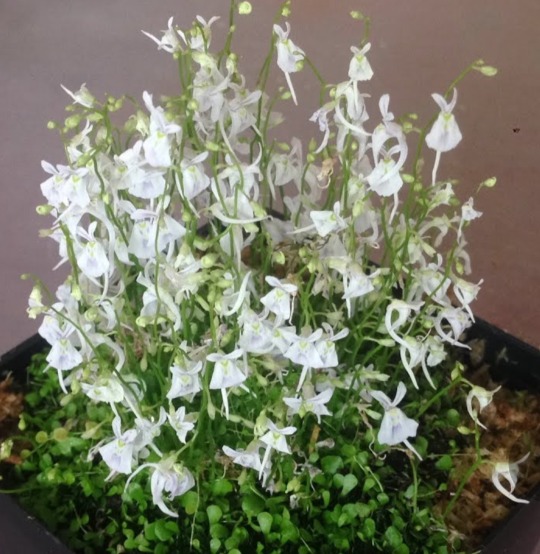


oh my god. oh my god. oh my god
10 notes
·
View notes
Photo

Card (@braveryshadows) gave Flowey the monstrous utricularia sandersonii named Kawaī Kemono - meaning Cute Beast - as a pet when Flowey quickly took a liking for the carnivorous flower. It acts a lot like a puppy and Flowey, it seems, is a dog person. Flowey likes to spoil Kawai with juicy and tender steaks and will even give some of his precious bacon.
Flowey gave Kawai a little collar - most likely with some magic so it stretches when Kawai grows to his much larger form so it wont harm Kawai or break - with a little monster heart-soul charm
Kawaī Kemono belongs to @braveryshadows
#Flowey#Undertale#Cuphead OC#Undertale RP Blog#Undertale Ask Blog#Cuphead RP Blog#Cuphead Ask Blog#OC RP Blog#art#friends oc
3 notes
·
View notes
Text
I've been trying to figure out a better common name for Utricularia, as 'bladderwort' is absolutely the worst.
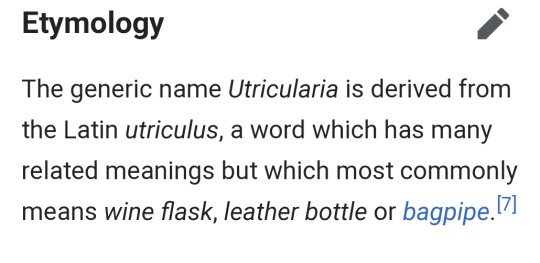
I think the most applicable 'utriculus' meaning is 'bagpipe'.


I mean, similar energy? That's the trap of Utricularia sandersonii on the left! Bagpipe plants, bagpipe flowers! That feels cuter and more fitting, but still a little weird and goofy which fits! It also infers the expanding and contacting the traps do.

Look at this! The flower of the same plant. You see this cute little thing and you ask somebody "what is this?" and they turn to you and burp out "BLADDERWORT", and it seems much less cute. You'd be thinking "what have they got to do with bladders and or warts?" The answer is nothing! A 'bagpipe plant' though, where does the atonal honking occur here, you ask? Beneath the soil comrade! Worry not though, the honks are but whispers.
14 notes
·
View notes
Text
The small carnivorous plants bog is going really well! 🌿
It has changed a bit since I set it up. In the set-up video, I had put in Empetrum nigrum and Calluna vulgaris. Unfortunately, both plants died after a while and I can't say what caused this.
I then planted the bottom completely with moss and added Utricularia sandersonii and Utricularia livida.
But the Drosera capensis alba in particular, which can be seen at the front right, has grown really big. In the meantime, it has formed some offshoots and is even flowering! 🌼
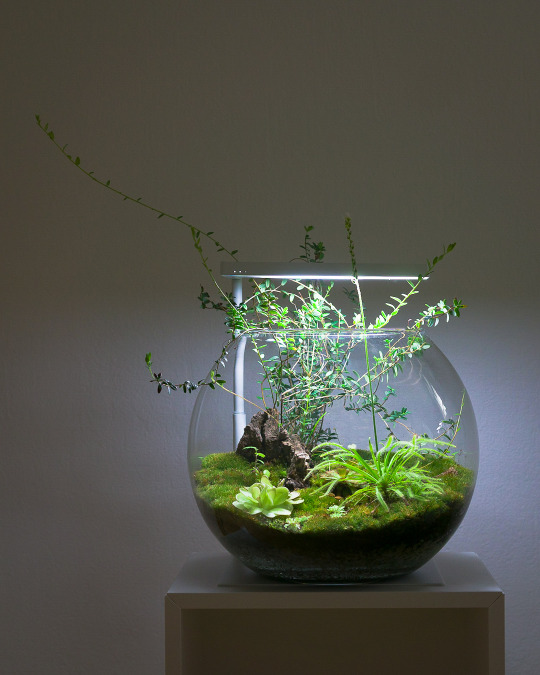
Materials I used for this:
Similar glass:
Spherical vase - https://amzn.to/3PjJ3Pp
Substrate:
Clay granules - https://amzn.to/3jduUr2
Carnivorous substrate - https://amzn.to/3hxC1Kv
Plants:
Drosera slackii hermanus
Drosera capensis alba
Pinguicula esseriana
Pinguicula weser
Vaccinium macrocarpon
Leucobryum glaucum
Light:
ONF Flat Nano Plus
If you would like to see how I set up the terrarium, take a look at my set-up video!
#carnivorous plants#carnivores#terrariumdesign#terrariumplants#terrariumlove#plantedtank#mossterrarium#mossgarden#drosera#pinguicula#utricularia
24 notes
·
View notes